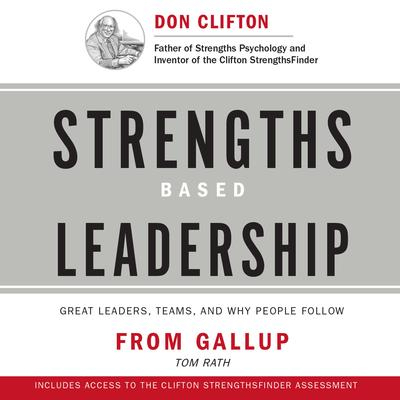Strength-based leadership book is one of the most effective and fun ways to learn about self-improvement and growth. They are highly detailed, informative, and even entertaining. Unfortunately, many people avoid buying strength-based books.
Some individuals believe there is not enough research to support the idea that these books are highly impactful and accurate.
Others think such texts are only available, are far too expensive or do not cover enough detail about strengths. In this article, we will address the misconceptions about strength books and show you their many benefits.

Book Strengths-Based Leadership: What Is It About?
Strengths-Based Leadership is a book written by Barry Conchie and Tom Rath, a relative of the highly acclaimed Dr. Donald O. Clifton. In this book, which is published by Gallup, the two explore what it means to be a leader and how strengths can help you unlock your leadership powers.
For example, the book will give you tips on how to better understand your team and boost communication using your current strengths. It allows the readers to see the stark difference between the leaders who use a strength-based approach and those who do not.
Rath and Conchie have decades of experience in the field of psychology. They found that those leaders who find the most success in their fields also tend to be strength-based leaders.
If you want to read a book that is grounded in science, this is a great option for you. They use data from a comprehensive 30-year Gallup study to inform their advice to you.
What is Included with This Book?
Gallup’s books are highly insightful, but something else also differentiates them from other strength books. One of the most unique benefits of buying a book from Gallup is all of the goodies you get for free along with it.
With these added goodies, you get even deeper insights into your abilities and even more personalized insights that regular books do not give readers.
Here are a few of the top add-ons included with the Strengths Based Leadership book from Gallup:
A CliftonStrengths Access Code
A CliftonStrengths access code can give you far greater insights into your strengths and abilities than nearly any other book add-on can. With this access code, you can take the CliftonStrengths test for yourself.
You can find the access code typically on the back cover of the book. When you use the code to take the CliftonStrengths test, you will see individualized results and feedback about your strengths.
Therefore, if you were wondering “Well, what are my personal strengths? How do I find them?” while reading the book, here is your answer.
Strengths-Based Leadership Resource Guide
In addition to offering you a strength-based access code, buying the book will also provide you with a strength-based leadership resource guide.
This guide gives you information on all 34 strengths Gallup tests for. It gives you tips on how to leverage each of these abilities to help your team and achieve your goals. Along with the guide, you get examples of leaders using these strengths in the real world and models for how you can incorporate them into your leadership.
Who Created and Wrote Strengths-Based Leadership?
Strengths-Based Leadership is a highly acclaimed book written by Tom Rath and Barry Conchie. Both of these authors are highly experienced and informed about the topic of strength-based leading, strength-based approaches, and positive psychology in general.
In fact, Tom Rath is directly related to one of the greatest psychologists of all time: Dr. Donald O. Clifton. He even wrote books with him when he was still alive. Tom has been a consultant to some of the most influential company leaders on how to lead with strengths.
Barry Conchie is also a highly experienced strengths expert. He has his own strength coaching organization, Conchie Associates, which helps companies with organizational leadership, planning, executive coaching, and psychometric analysis. Barry Conchie is a best-selling author as well.
The book is published by Gallup. Gallup started as a small survey company, but with the help of Dr. Donald O. Clifton, it progressed to become one of the most famous and insightful strength analysis organizations today. They sell a variety of other books and assessments.
What is Strengths-Based Leadership?
Strength-based leadership is an amazing strategy to use if you want to level up your career success. But before you can start implementing this strategy, you should get a basic understanding of what it is. It is a type of leadership that helps you focus on your strengths and upgrade your abilities.

This is in stark contrast to the typical weakness-based strategy, which tells you to focus on overcoming your weaknesses instead.
Strength-based leadership is based on the principles of positive psychology, which have been explored by specialists such as Martin Seligman. It is directly tied to the strength-based approach in general, just applied to leaders.
In essence, the process involves identifying your strengths through a tool like a strengths test. From there, you find where you currently apply your strengths and ways to improve your strengths.
You work on using your strengths more often and in new situations. As a result, your strengths grow, and you become more productive, positive, collaborative, and successful.
How Reading This Book Can Help You?
Reading the Strength Based Leadership book can have an immense impact on your career, team, and future in general. The text is an excellent introduction to the strength-based approach to leadership. There are a plethora of benefits that you get when you follow this approach.
For example, being a strength-based leader makes you more positive and productive. When you are doing what you do best, you are naturally more efficient and achieve your goals quicker.
This can make you more satisfied and loyal to your job. It gives you the boost of motivation you need when experiencing tough times.
Another key benefit of being a strength-based leader is setting a great example for your team. When your team notices your productivity, positivity, and commitment to self-improvement, they are more likely to do the same.
This leads to a fantastic ripple effect where more and more employees start to follow their strengths, thus leading to more team success overall.
Who Created and Developed Strengths-Based Leadership?
The strength-based leadership approach is based on decades of research from top psychologists. Some of the most revolutionary research on the topic of strengths was performed by Dr. Donald O. Clifton and his team.
In fact, he had done so much research into how strengths work and how they can benefit teams, that he was able to turn Gallup into a leading strengths organization.
From there, Gallup has done decades of research and surveys into what makes leaders succeed. These results were analyzed by teams at Gallup, and they added on to the strength-based approach with these findings.
They were able to state which strengths are present in which leadership types and how you can leverage these abilities for your own career.
Tom Rath and Barry Conchie further added to the idea of strength-based leadership. With their book Strength Based Leadership, they were able to analyze research and come up with new, innovative ways to apply your strengths to the workplace.
Where Can You Buy the Strengths-Based Leadership Book?
Now that you are familiar with the benefits of strength-based leadership and why Strength Based Leadership is such a great book, you may be interested in getting a copy yourself. The book is available in numerous spots. You can get your hand on a copy by buying it at a physical store or by ordering online.
If you want to order the book online, you can find a copy on Gallup’s website. Additionally, Amazon sells copies of the book as well. Physical copies of the book can be found in many popular bookstores, such as Barnes and Noble, Walmart, and more.
There are numerous forms of the book as well. For example, you could read a digital version or a physical copy. You could listen to it on Audible if you would prefer to have it read to you. In addition, you could also get the Kindle version.

